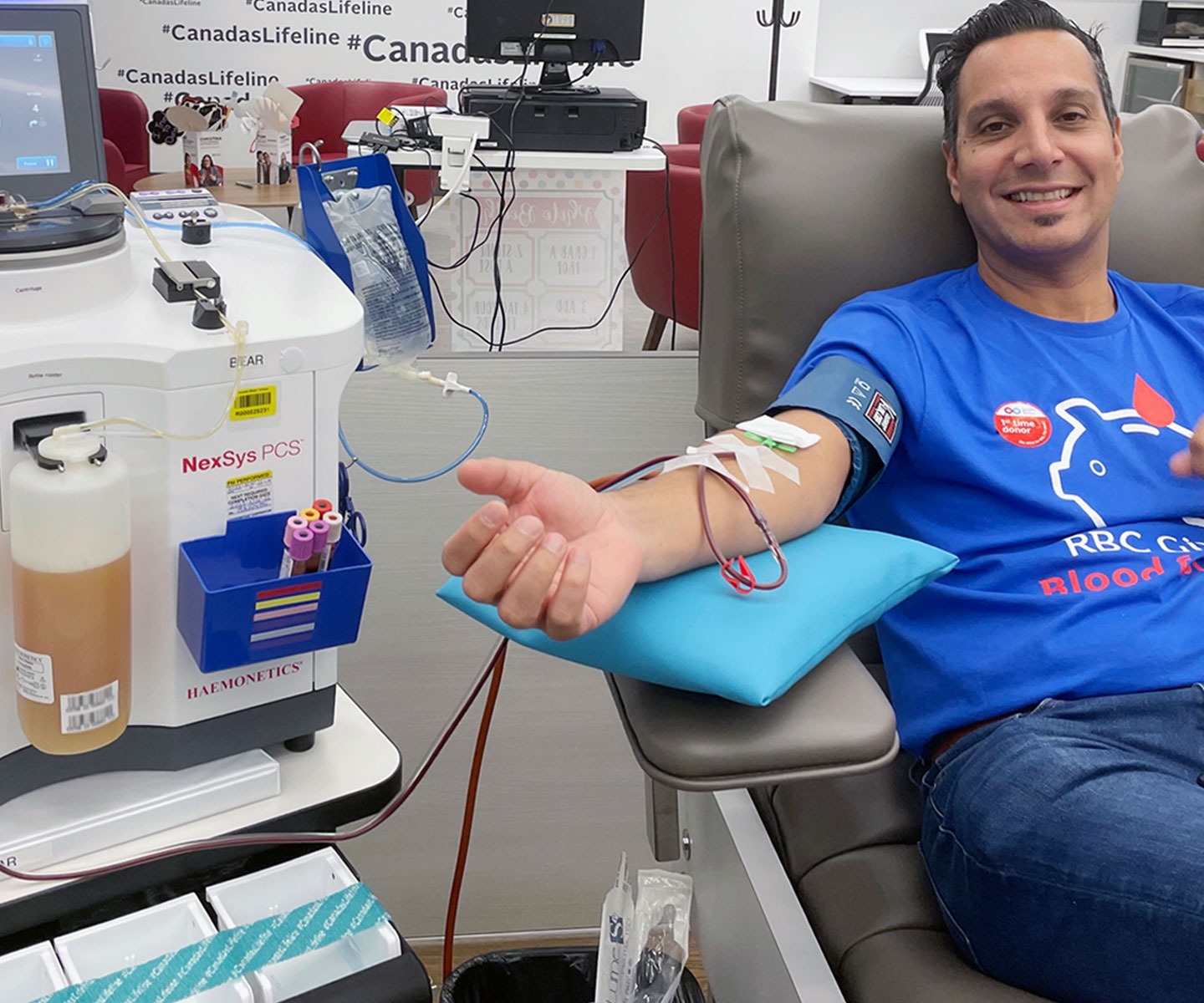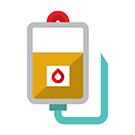Five ways your plasma helps patients

For many, medications made from this blood component are lifesaving
Did you know that even though your blood is red, it’s mostly composed of a straw-coloured component called plasma? This “liquid gold” has a special place in Canada’s blood system.
We collect plasma from both blood donations and plasma donations. When you donate blood, your donation is separated afterward into the different components (red blood cells, platelets and plasma) for different patient uses. When you donate plasma, your blood gets separated as it’s donated, so we can collect only plasma (and return the rest of your blood to you as you relax in a comfortable bed).

Plasma donors can give more plasma per visit and also donate more frequently than blood donors. That’s because your plasma supply replenishes faster than the other components of your blood — typically within days.
Some of the plasma we collect is delivered to hospitals for transfusions. But we send most of it — including all the plasma collected at our dedicated plasma donor centres — to manufacturers. They use it to make lifesaving medications for patients in Canada.
As a donor, you don’t just make a difference, you make all the difference. Here are just a few of the ways your plasma can help others.
1. Plasma can help people thrive with severe immunodeficiency
Some people are born with conditions that prevent them from fighting off illness. Immunoglobulins, which are made from plasma, may be the only treatment, essential to their survival.
Cayleigh Kearns was ill constantly as a child and teen before eventually being diagnosed with common variable immune deficiency (CVID). Immunoglobulins made all the difference. And like others with such rare genetic disorders, Cayleigh expects to need them her whole life.
“There’s no comparison to how I felt,” she says. “I just felt a thousand times better.”
2. Plasma can prevent death and disability from Guillain‒Barré syndrome (GBS)
This condition, which affects approximately one in 100,000 people, causes the immune system to attack nerve cells. Jeff Brown of Capreol, Ont., was one of them. His GBS symptoms seemed to come out of nowhere, and within just a few days, he was paralyzed from the neck down.
Without immunoglobulins, medications made from plasma, Jeff could have been permanently disabled. Instead he went on to recover fully. He’s even become a plasma donor himself.
3. Plasma can be used to treat life-threatening blood disorders
Immune thrombocytopenia (ITP) is a disorder which leads to abnormally low levels of blood cells called platelets, putting the patient at risk of severe bleeding. For treatment, Christina Moreau of St. Catharines, Ont., relied on a medication made from plasma for years. And she knows she may need it again in the future.
“I have so much passion and so many dreams. Because of plasma donations I’ve been able to say ‘Nope! Sorry illness. You’re not going to get me. I’m going to persevere,’” says Christina.
4. Plasma helps patients battle rare neurological conditions
As a young child, Jayden Liuzza spent weeks in hospital with frightening symptoms before being diagnosed with anti-NMDA receptor encephalitis. It’s a condition where the immune system attacks certain receptors in the brain.
“At this point, she was just a shell, lying in bed. We wondered if she even knew we were there,” recalls Jayden’s mother, Cheryl.
Treatment of the illness frequently involves medication made from donated plasma. Jayden received immunoglobulin infusions every month for nine months, in addition to intensive therapy at a rehabilitation hospital.
Now a teenager, Jayden is fully recovered. She has gone on to compete in dance and serve as an ambassador for charitable organizations that supported her through her illness and treatment. In September 2022, she and her parents hosted a group donation event at our plasma donor centre in Brampton, Ont., where they personally thanked donors for their lifesaving efforts.
5. Plasma supports patients through cancer treatment and organ transplants
Aggressive medical treatments for cancer, such as chemotherapy and stem cell transplants, can have severe side effects. That can include temporary immunodeficiency, which puts the patient at risk of life-threatening infections. For some, immunoglobulins from plasma deliver an essential boost to the immune system.
People receiving organ transplants may also receive immunoglobulins to support their recovery.
Ready to make all the difference with plasma? Book now to give plasma donation a try. Together, we are Canada’s Lifeline.



